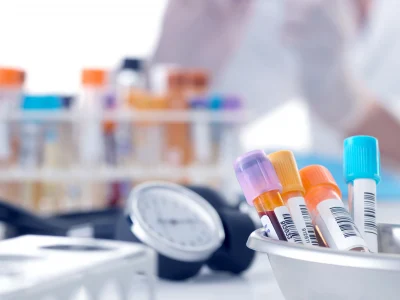“Myth” may be a bit strong to use here, “misinformation” would be a more appropriate word. Either way, it’s information you need to know.
I’ll preface this by saying that conventional medicine very much has its time and place. It saves lives, and it’s allowed us to evade diseases and illnesses that shorten lifespan and impair quality of life. We certainly need it!
With that said, there’s still gaping nescience in the medical community when it comes to preventing illness. To no fault of doctors, they aren’t taught prevention. They’re taught solutions. “If a patient has problem X, then give them Y to fix it. (Y usually =prescription meds or surgery).
If this sounds more like a math equation than medicine, that’s because it is. Conventional medicine is algorithmic in nature. It has to be. When 0.29% of the population (the doctors) have to treat 100% of the sick population, the approach has to be streamlined and generalized.
This is great for sick people who need treatment for their ailments but not great for those who want to prevent illness.
The problem with medical education and textbooks is that they’re 10-20 years behind the research. Many things that were once thought to be true have been disproven, yet doctors are still taught outdated standardized, 2+2=4 approaches to treat people.
The two most prominent yet dangerous messages that prevail in conventional medicine are the cholesterol theory and the iron deficiency anemia myth. Cholesterol is not the culprit in heart disease, and please STOP taking supplemental iron – it’s only making things worse!
Myth #1: Dietary Cholesterol is NOT the Problem in Heart Disease
That’s a pretty bold statement, but it’s true. To understand why, you’ll need to know a little history of how the theory came to be. I’ll keep things short, sweet, and to the point.
This theory of cholesterol being the enemy of the heart began in the 30s by a researcher named Ancel Keys and extremely flawed research. He wanted to be the one who discovered the answer to heart disease, so he cherry-picked data to convince the world that animal fat was the enemy when this was not the full truth. You can also thank him for the trans-fat fad that swept the 90s.
I won’t bore you with the history. If you want to know more about how flawed and scandalous this research was (and how messed up it is that conventional medical treatment decisions are still made based on this invalid data), here’s a great podcast on the topic.
The 2+2=4 simple math equation doesn’t work in terms of explaining how cholesterol ends up in the arteries in the first place. Thanks to Keys, the world thought for far too long that:
cholesterol in food + cholesterol in blood = cholesterol in arteries
But it’s far more complicated than that! First of all, dietary cholesterol does not, I repeat, DOES NOT contribute to blood cholesterol levels(1). It gets broken down in digestion, and only 1-3% of its constituents contribute to cholesterol molecules in the blood.
The American Dietary Association actually redacted their recommendation to avoid eggs and dietary cholesterol in 2015. Yes, you can eat eggs, and in fact, you should! They’re nutrient powerhouses.
Saturated fats contribute to dietary cholesterol by a small amount, but the biggest offender you should be concerned with raising your cholesterol is processed dietary carbs and insulin resistance (see last month’s article)(2). This is by far the most potent way to give yourself heart disease.
Insulin resistance is a major problem. Eating excess carbs in conjunction with inadequate daily movement causes the liver itself to become insulin resistant and “fatty,” – resulting in what’s called non-alcoholic fatty liver disease.
It’s important to burn up the carbs you do eat through movement and to avoid processed carbs whenever possible. Recent research even supports the hypothesis that lipid labs are essentially useless in determining heart disease risk. Apo B is a more indicative lab to run. You can, however, assess your insulin resistance by looking at your HDL-c to triglyceride ratio.
Another very useful marker to test for is homocysteine in assessing heart disease risk. When high, this molecule can damage the endothelial lining of the blood vessels. Ensuring adequate intake of B6, B12, folate, B2, and trimethylglycine can help keep this molecule in check.
Citrulline is also great for boosting nitric oxide production, which protects the endothelial layer of your blood vessels.
Summary:
-
-
- Test for insulin resistance, Apo b, and homocysteine levels.
- Reduce processed carb intake and move your body (this is really a non-negotiable for life).
- Ensure adequate B2, B6, B12, and folate intake.
- Take trimethylglycine and citrulline to further protect arteries and vessels.
-
Myth #2: Take Iron Supplements if Your Iron Levels are Low
This is another big trend in modern medicine that has been oversimplified and, simply put, is quite harmful.
Iron is essential for life. It’s what allows our red blood cells to carry oxygen. But iron is also very unstable. It can easily react with oxygen (via the Fenton reaction) to create damaging free radicals if it’s not regulated properly in the body.
Most of the iron in your body is stored throughout the organs and tissues. Only 1/10th of 1% of the iron in your body is present in serum (how it’s measured in the blood labs your doctor runs to determine if you’re anemic). One study showed that in senescent, aging cells, iron in the tissue was 10x greater than iron in the blood (3). The accumulation of iron in the cells is directly correlated with age-related oxidative damage.
The reason this matters is because there are no tests that tell you the level of iron in your tissues. We only look at the tiny fraction that’s present in your blood. This is not ideal. There are several reasons that your body will store iron in the tissue, including infection, inflammation, copper or retinol deficiencies, and excess vitamin D and C (as ascorbic acid) intake.
Iron in the tissues can oxidize and damage cells and DNA (like how iron in the weather can rust). This tissue damage can result in a number of issues, including further inflammation, calcification (atherosclerosis), fatigue, cognitive decline, microbial overgrowth, and irregular/heavy menstrual bleeding, to name a few.
Your doctor doesn’t know this. They see low iron levels in blood labs and are taught that this is anemia. They then recommend that you supplement with iron which only adds fuel to the fire.
The goal should be to liberate the iron that’s stored in the tissue. Humans need about 25mg of iron per day. But 24 of these 25mg should come from our body’s own internal iron recycling system. Only 1mg is actually needed from the foods we eat. Iron supplements do not supply iron in a form that our bodies can easily use, thus causing more inflammation.
A primary reason that your body stores iron in tissues is because it doesn’t have enough of the essential minerals and cofactors that regulate it properly – especially copper, retinol, and magnesium. These are required to ensure iron doesn’t oxidize in the body and to keep the body’s iron recycling system running smoothly.
Recuperate IQ supplies the copper needed to regulate iron, and retinol makes it bioavailable. Cod liver oil is an excellent source of both retinol and vitamin D (Formula IQ’s CLO is the best value for the cost – you don’t want added synthetic vitamins A and D). It’s essential that you have enough retinol in conjunction with vitamin D in order for D to function in the body.
Summary:
-
-
- Stop taking iron supplements
- Eat foods high in bioavailable minerals like iron, copper, zinc, etc. such as liver, claims, oysters, and spirulina.
- Take Recuperate IQ, Cod liver IQ and Mag IQ
- Get vitamin C from whole food sources or from Whole C IQ rather than ascorbic acid.
- Learn more about this dynamic between iron and copper: https://open.spotify.com/episode/6BqLWbiuYhVAJwHKNMdYqG?si=ddKncVq7Rnuf8KIm9wOqFA
-
Conventional and Functional Medicine
Functional medicine encompasses an intimate understanding of biochemistry in relation to health. We’re not interested in just basic principles (like “eat more fiber”) and standardized protocols. We want to know every pathway and interaction involved in the body, and we want also to know the individual experiencing the symptoms.
Everyone is different. Conventional medicine bases its work more on the signs (tangible, measurable, objective items), while functional medicine cares about your symptoms. After all, how you feel should be the most important measure of health.
Conventional medicine exists to treat. They treat an injury or disease with specific interventions designed to manage the situation as best as they can to the extent of their knowledge.
Functional medicine exists to prevent and/or undo what leads to the disease in the first place. And it does so in a way that aligns with each patient’s unique nuances and preferences. I like to call it lifestyle medicine.
The more you know about your body, the better you can take care of it. Testing is very important for that reason. But to get the most from the results, you must understand the biochemistry and physiology.
It’s also important to know what tests are validated and provide actually useful information (many stool tests, complex urine analyses, nutrient testing, and food sensitivity tests are not). You have to be looking in the right places (serum, RBC, tissue, etc.) in order to understand the context of what’s being tested and what those results actually mean.















